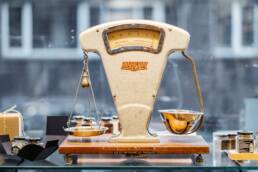
The good news is that awareness is growing, and some companies are leading the way in designing products and policies that better reflect the needs of all users. But the first step in solving the problem is recognising it exists. Just as auto manufacturers needed THOR-5F to test their designs, businesses need their own internal checks, whether that’s re-examining workplace policies, redesigning products, or simply asking whether a ‘one-size-fits-all’ approach is truly fit for purpose.
Inclusive design isn’t just about fairness—it’s about better products, safer environments, and a more equitable world, at home and work. Whether we’re building technology, designing spaces, or setting policies, ensuring that women’s perspectives are actively included is no longer optional. It’s essential.
At Lumin, we believe that collaborations between women can be a powerful way to challenge and break the biases built into product development and workplace practices. By amplifying women’s voices and perspectives, especially in industries and sectors where their needs have been historically overlooked, we can create more inclusive, effective, and innovative solutions.
This is why building networks that empower women to collaborate, share insights, and support each other is a key focus for us. Together, we can help shape a future where gender bias is no longer the standard, but the exception.
#InclusiveDesign #GenderEquity #WomenInBusiness #ProductDevelopment #WomenInInnovation #WorkplaceEquality
Author

Maggie Taylor
Founder of Lumin, creating opportunities for women solopreneurs to collaborate, grow, and build successful businesses, fuelled by shared knowledge, mentorship, and real partnerships across generations
Related Posts
rethinking success: women, business & purpose
Can women lead the way in redefining business success? Not just as participants…
07/03/2025business,mission,entrepreneursBusiness for good,RSA,Professor SIr John Kay,Royal Society for the Arts,women in business,Purpose driven,redefining success
the work-life balancing illusion
We talk a lot about work-life balance, but for many women, the ‘life’ side of…
07/03/2025life,wellbeing,careerssolopreneurship,gender equity,domestic load,productivity,sustainability,multitasking myth,women entrepreneurs,work-life balance,burnout
tackling the march of macho leadership
The march of macho leadership seems unstoppable. How can we foster genuine…
26/02/2025mission,careersElon Musk,Signalling Authenticity,dictatorships,leadership,women in leadership,Vladimir Putin,Donald Trump




Designing for all:
The way we design our world has long been shaped around a ‘default male’ perspective, often leaving women as an afterthought in product development. From safety equipment to smartphones, medical research to workplace policies, gender bias is embedded in ways many of us don’t even notice: until the data reveals the consequences.
Take car safety. For decades, crash test dummies were modelled on the average male physique, meaning that vehicle designs prioritised male bodies when assessing impact and safety. The result? Women are 73% more likely to be injured in a car accident. It wasn’t until the development of THOR-5F, a crash test dummy designed to reflect female body proportions, that car manufacturers began to address these disparities.
This exclusion from the design process extends beyond car safety. Everyday products — from smartphones to office air conditioning — tend to be designed with men’s needs in mind.
Phones have grown too large for the average woman’s hand. Workplaces set air conditioning temperatures based on men’s metabolic rates, leaving many women reaching for a jacket in summer.
Even medical research has historically prioritised male physiology, leading to misdiagnoses and inadequate treatments for women’s health conditions.